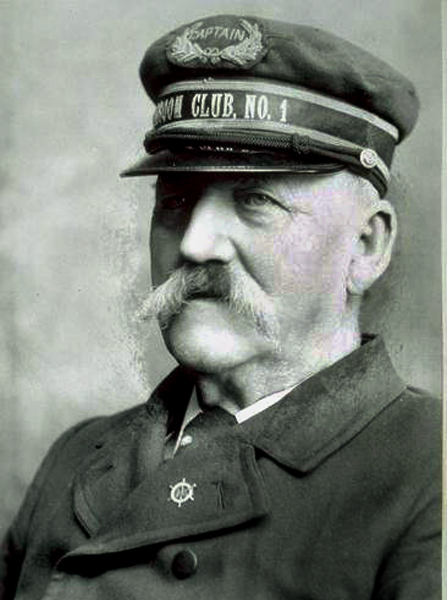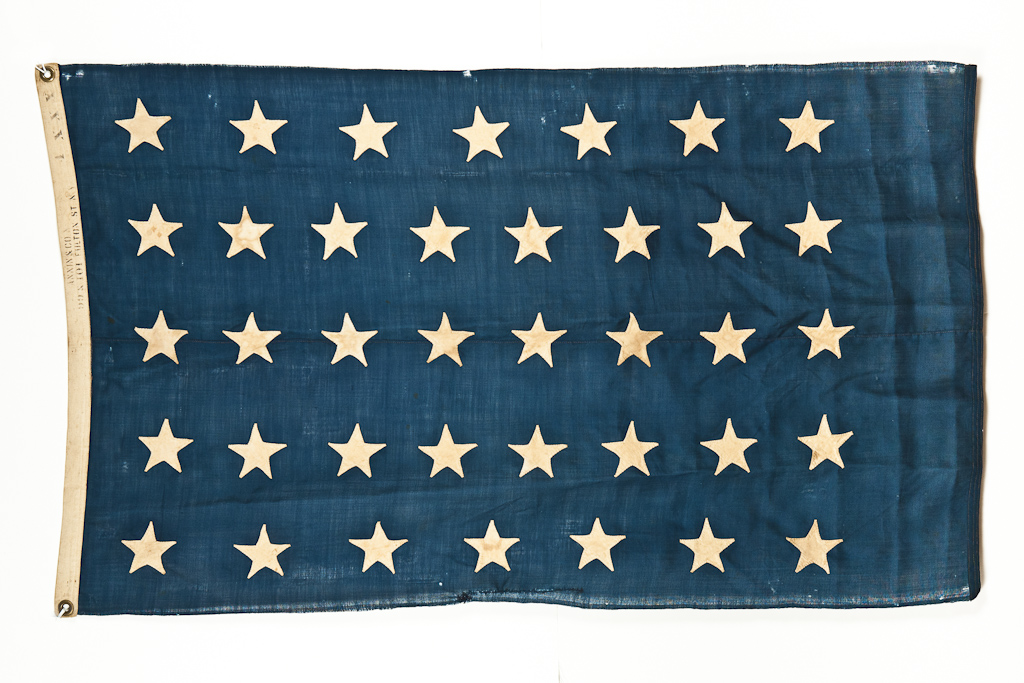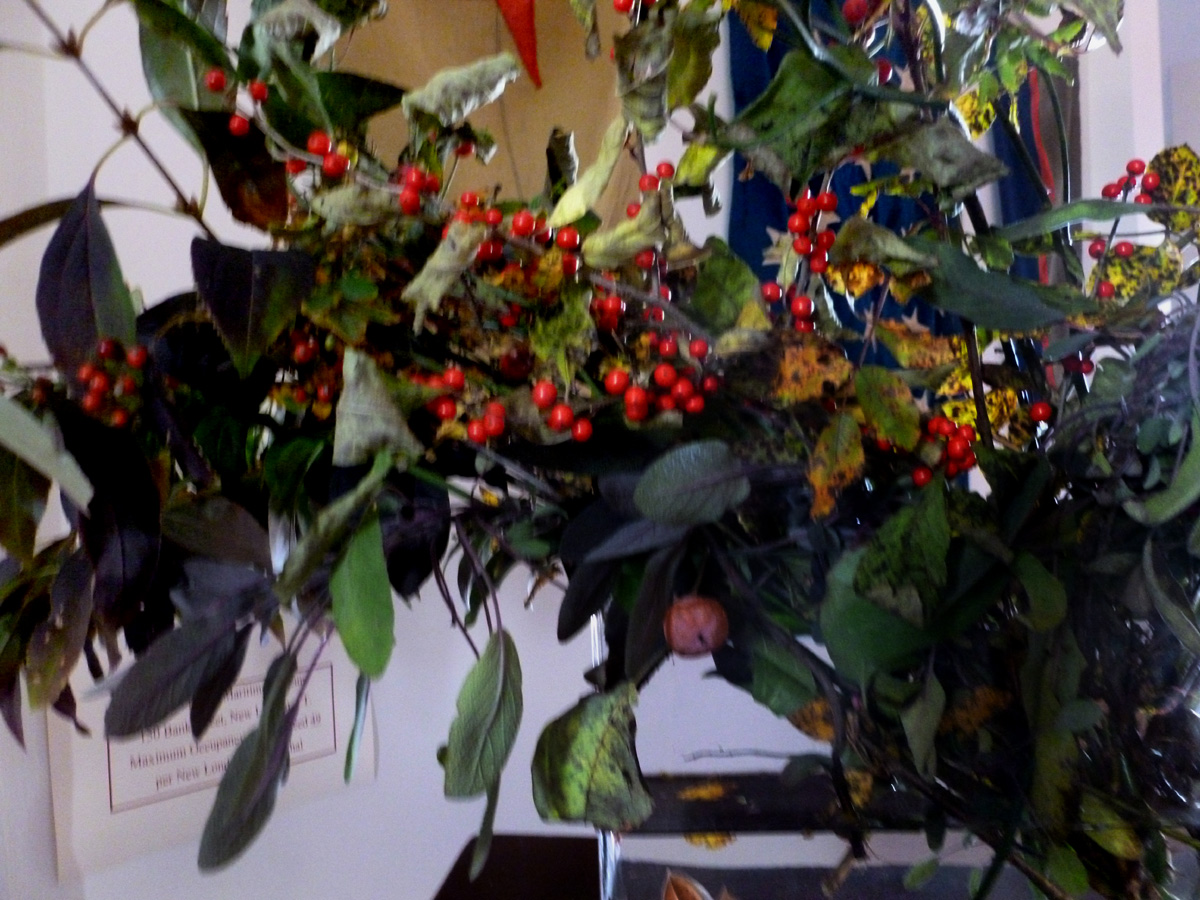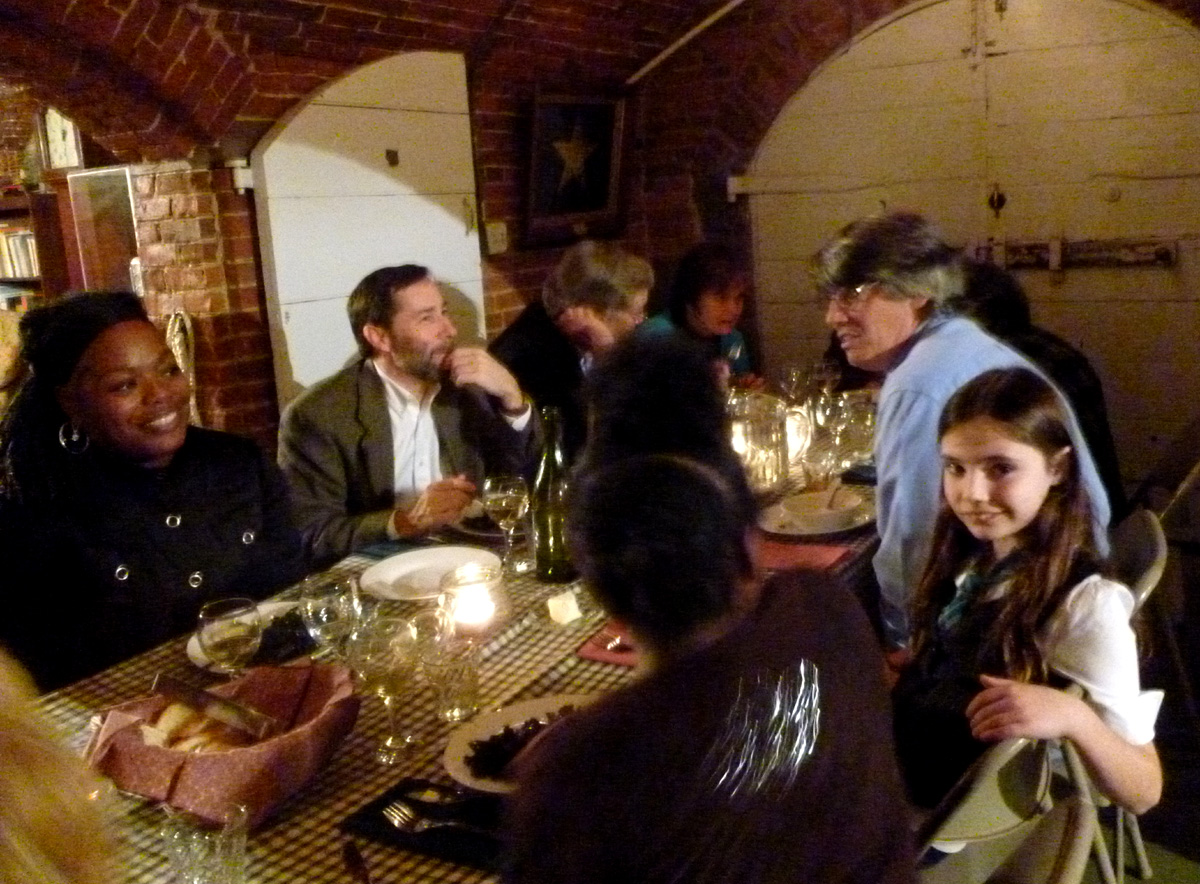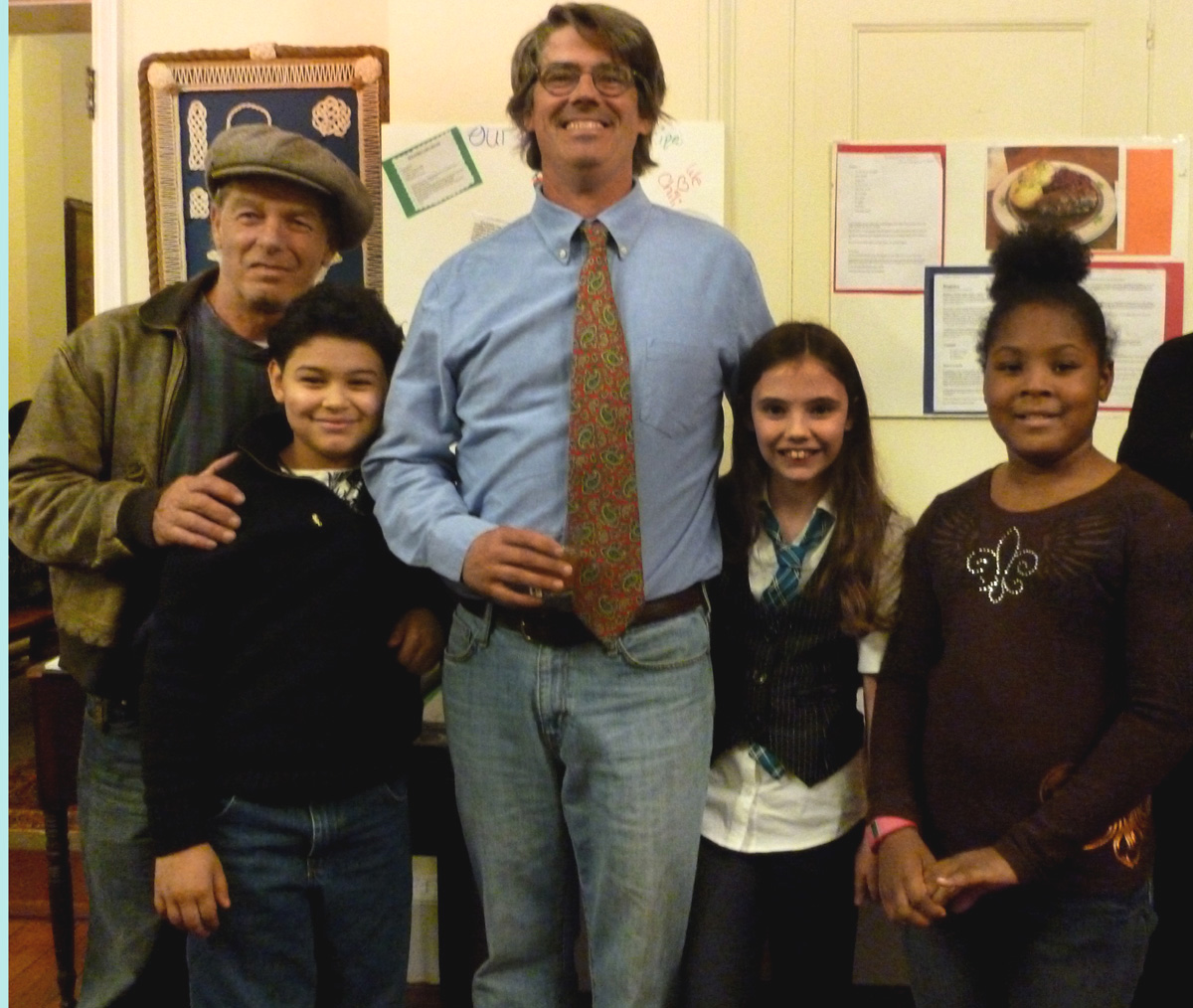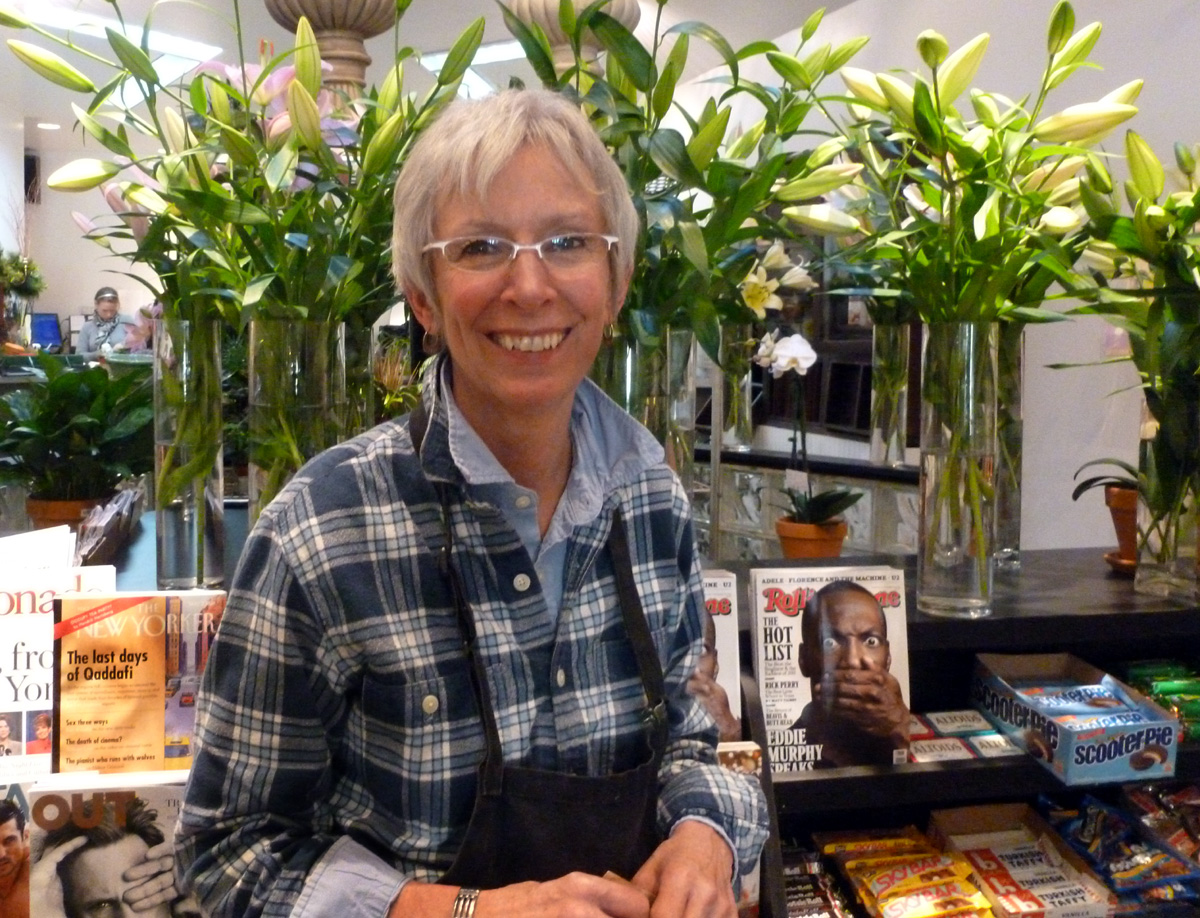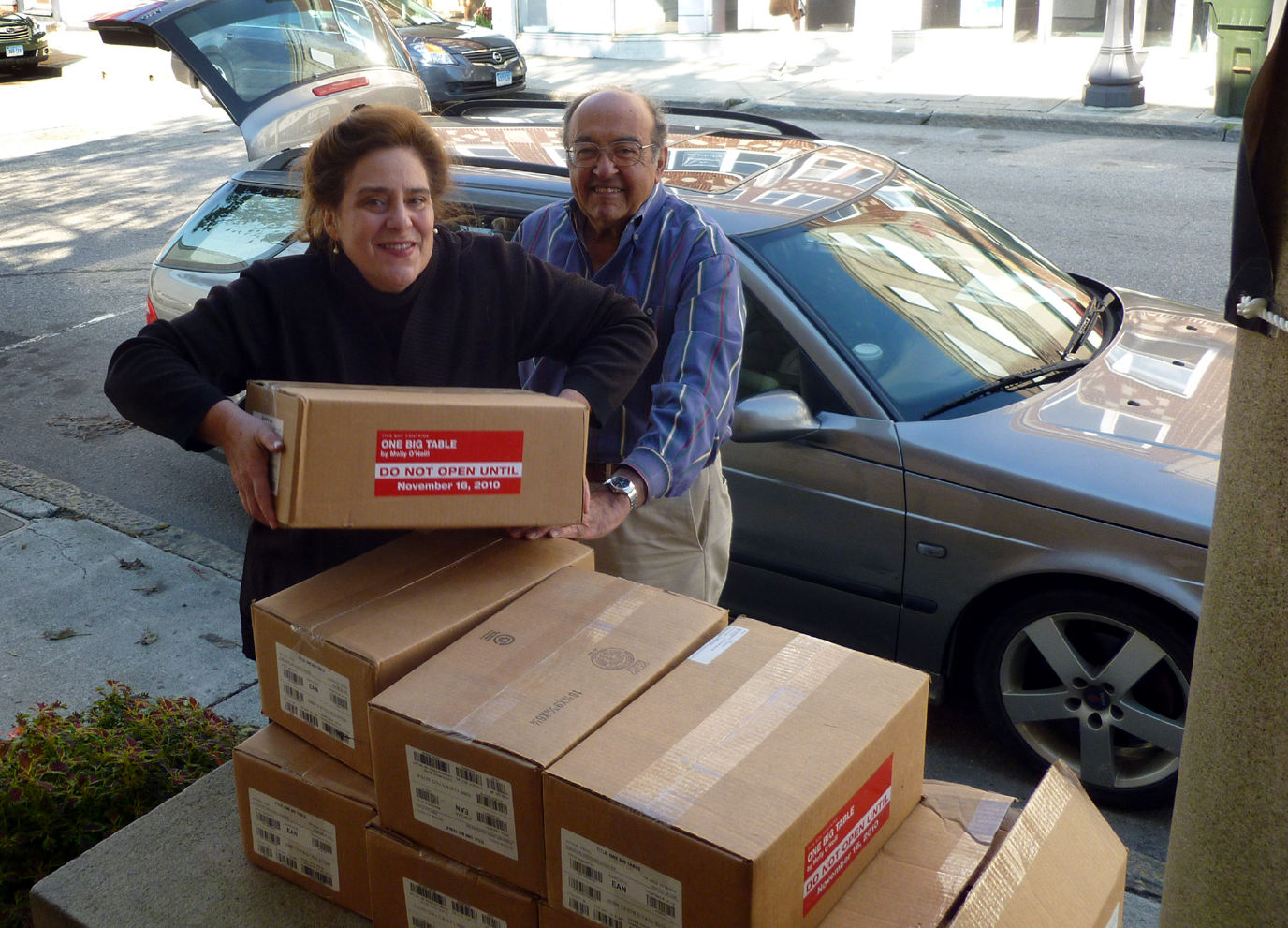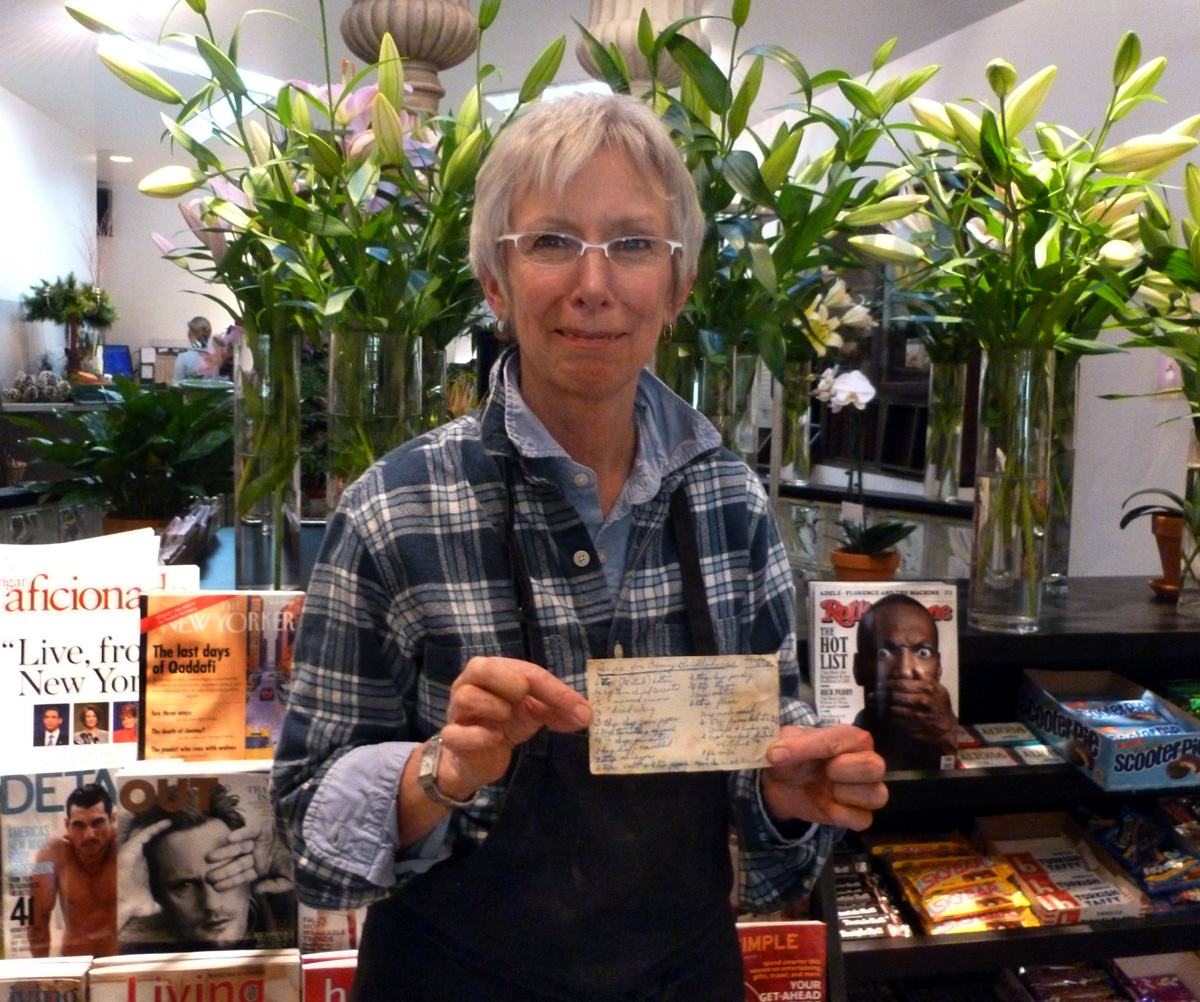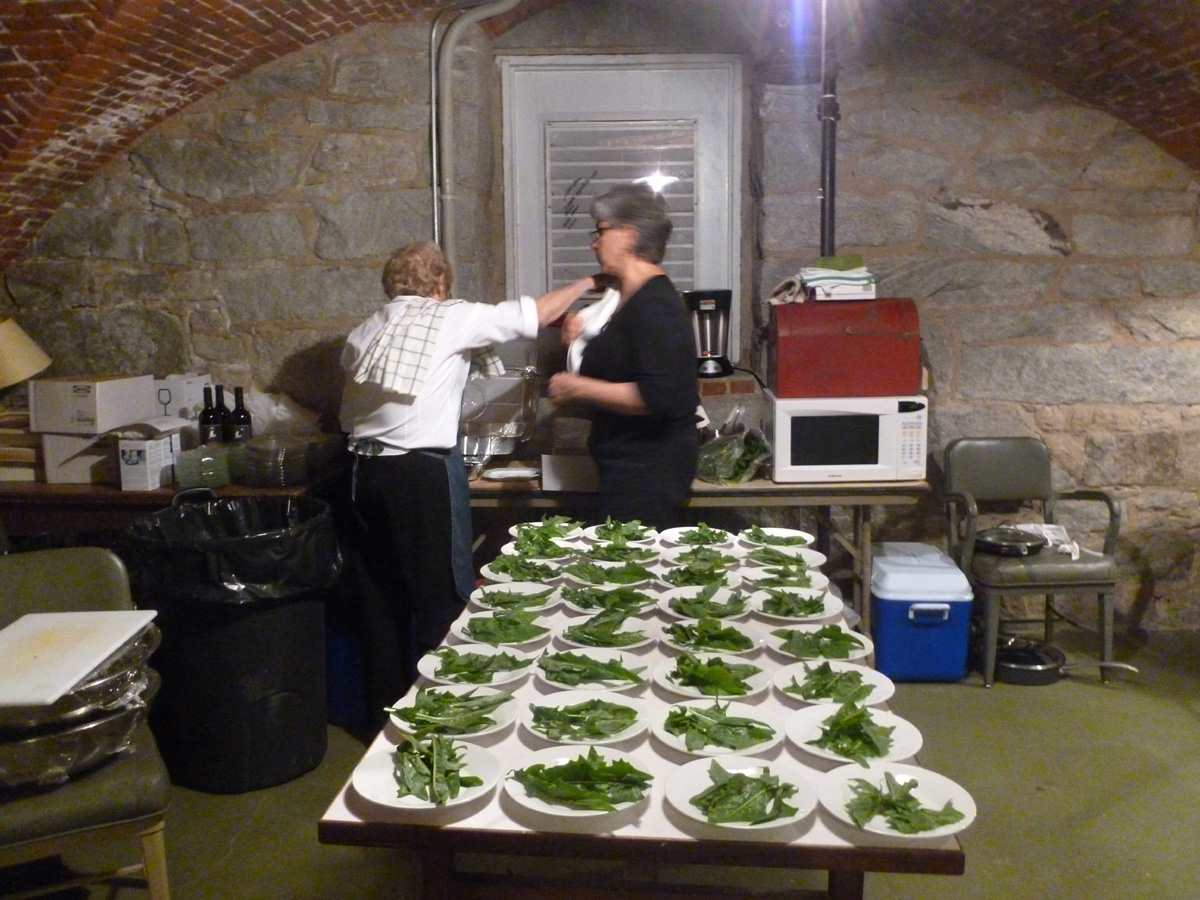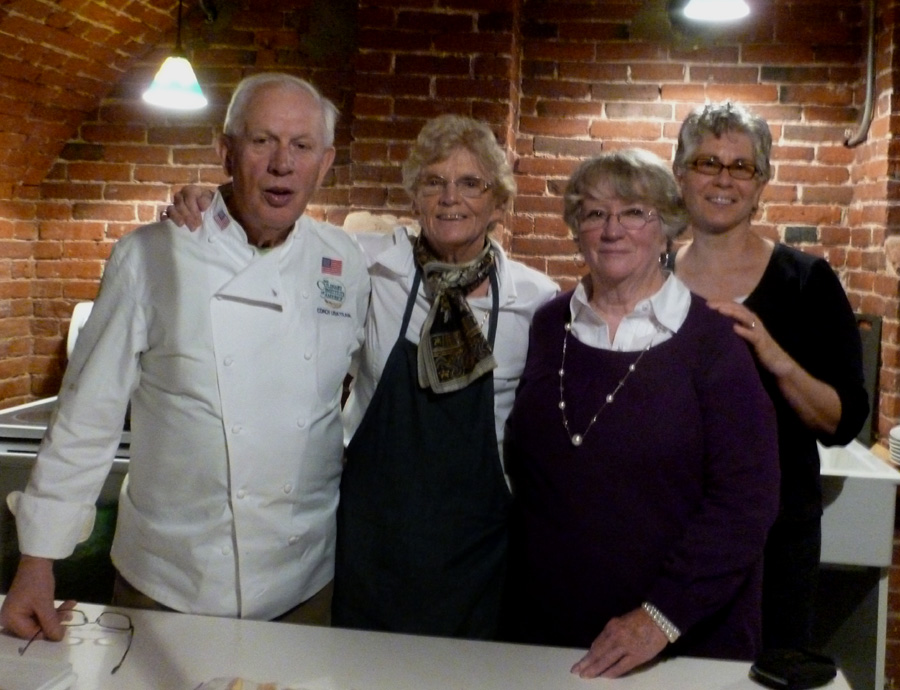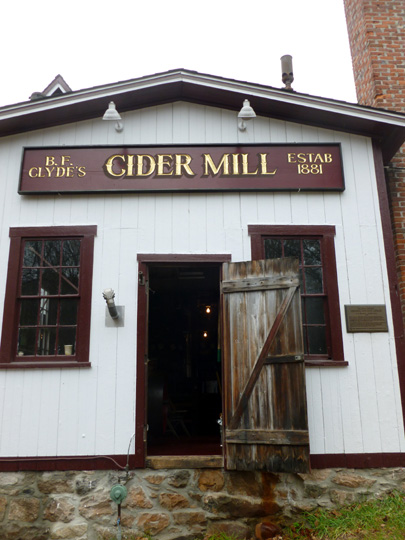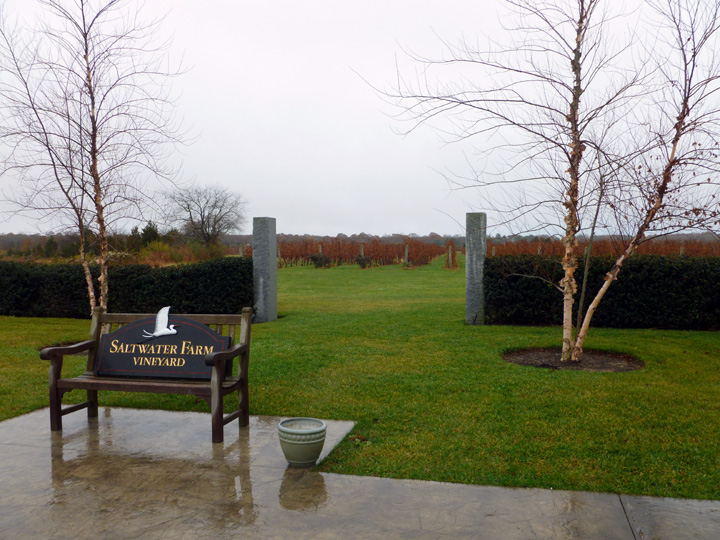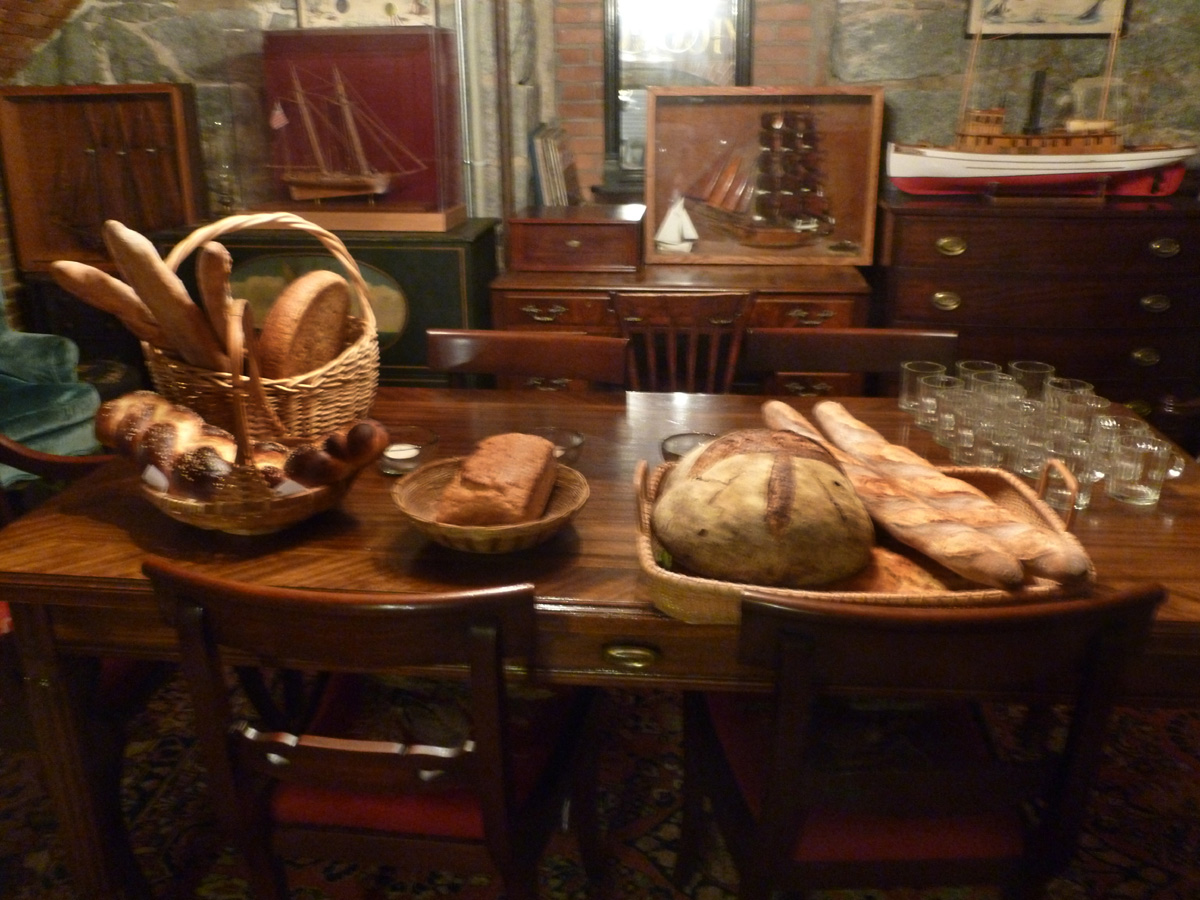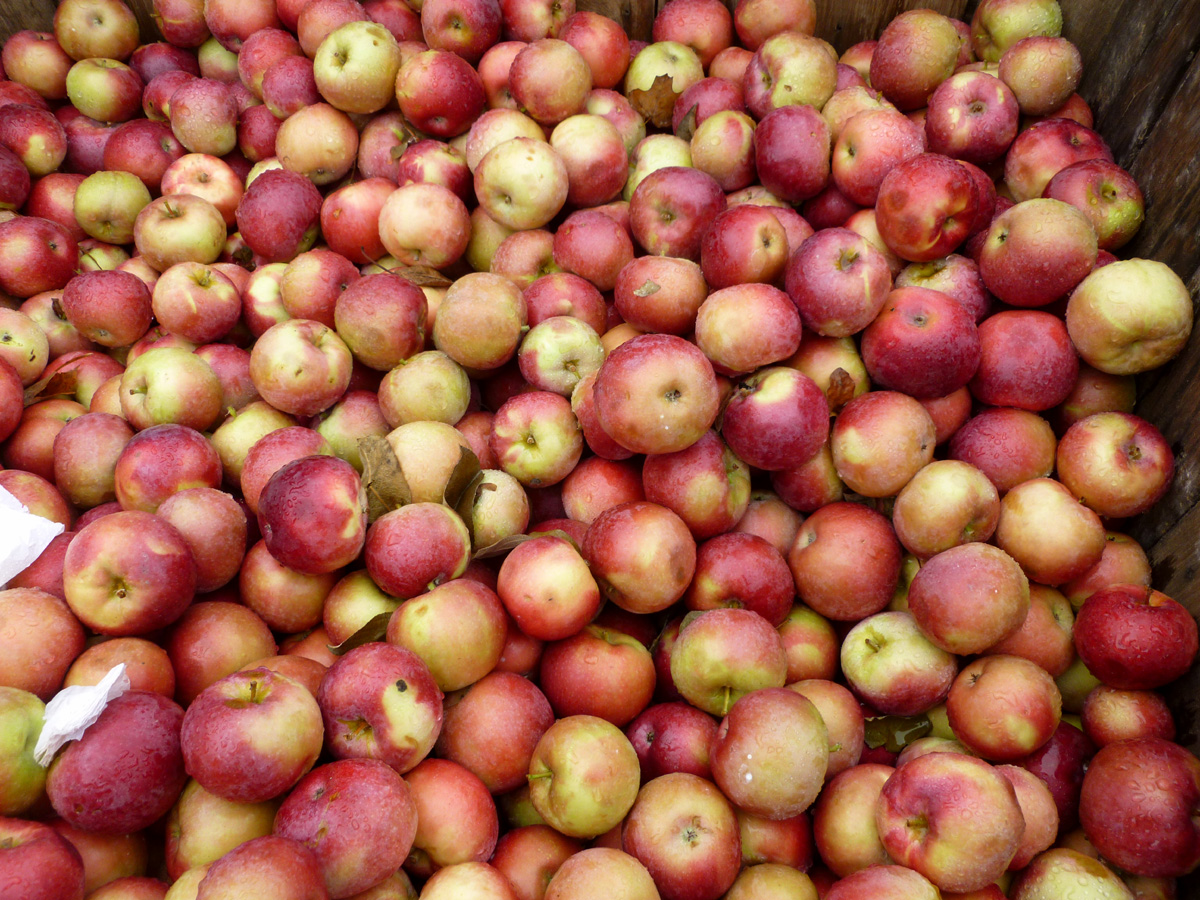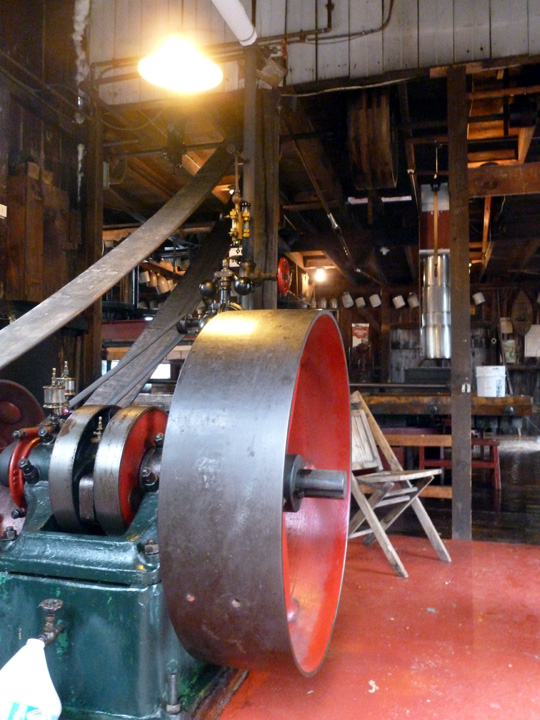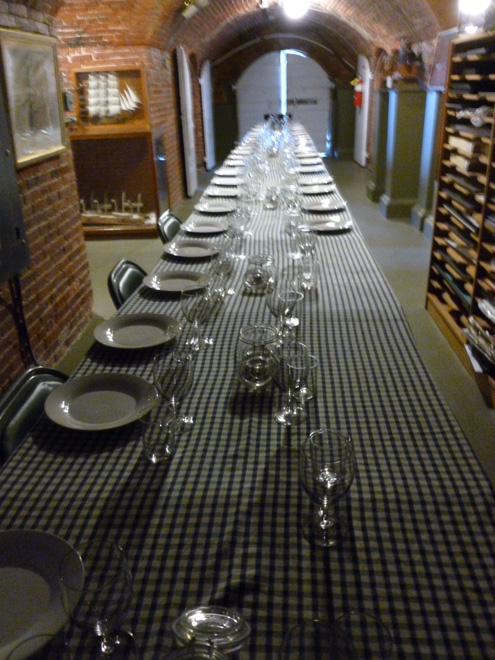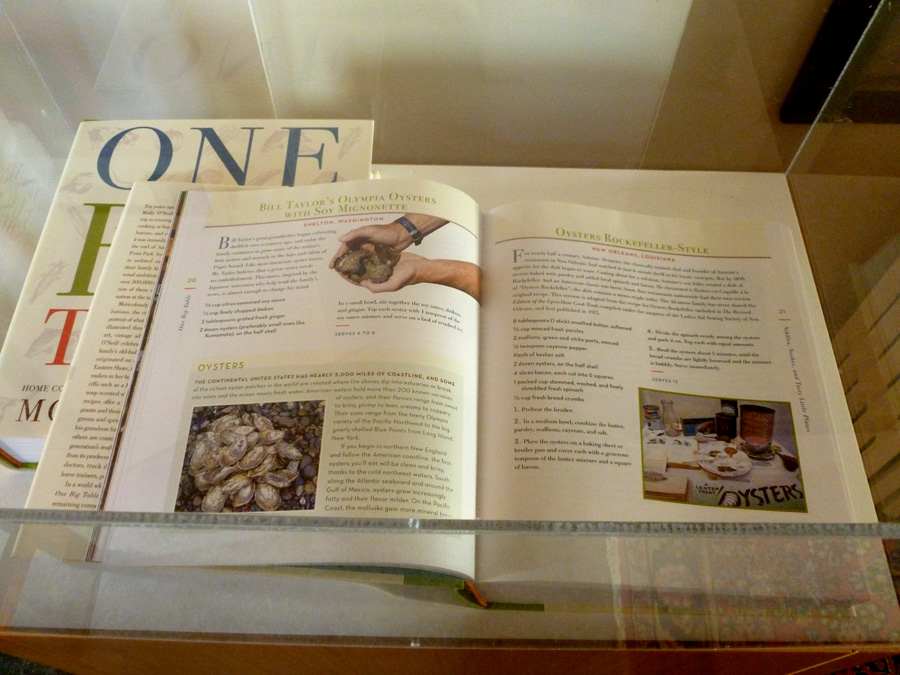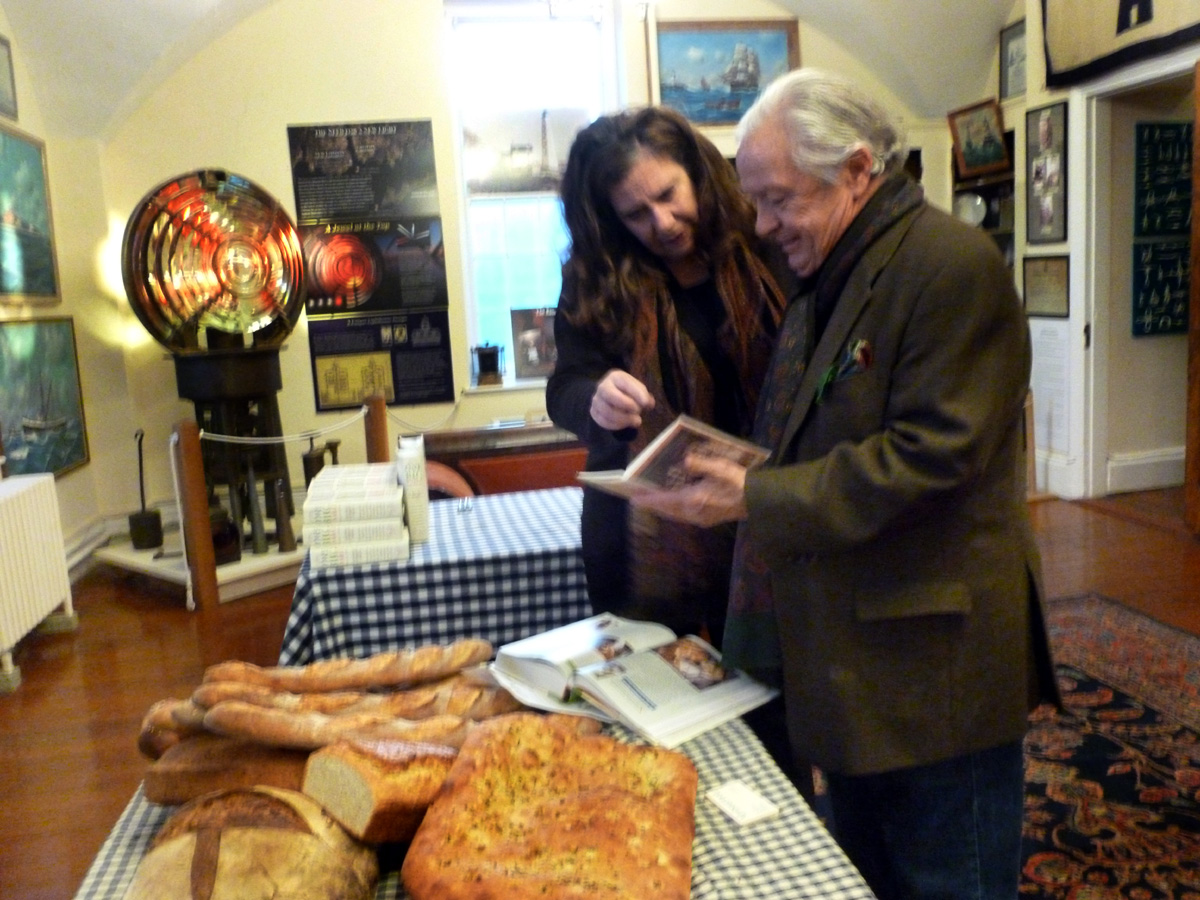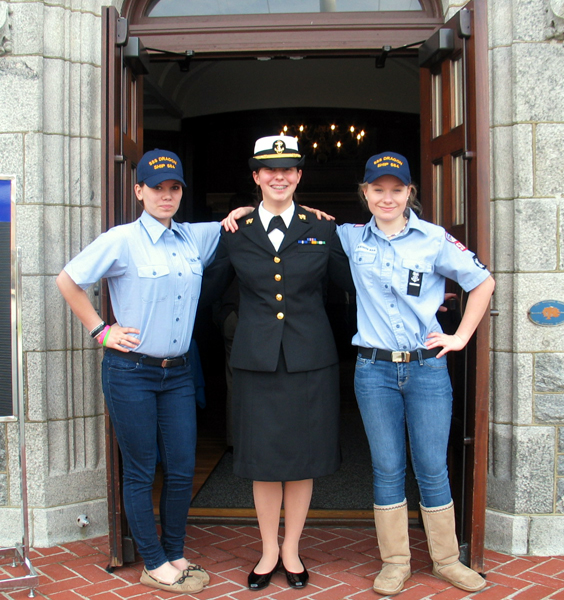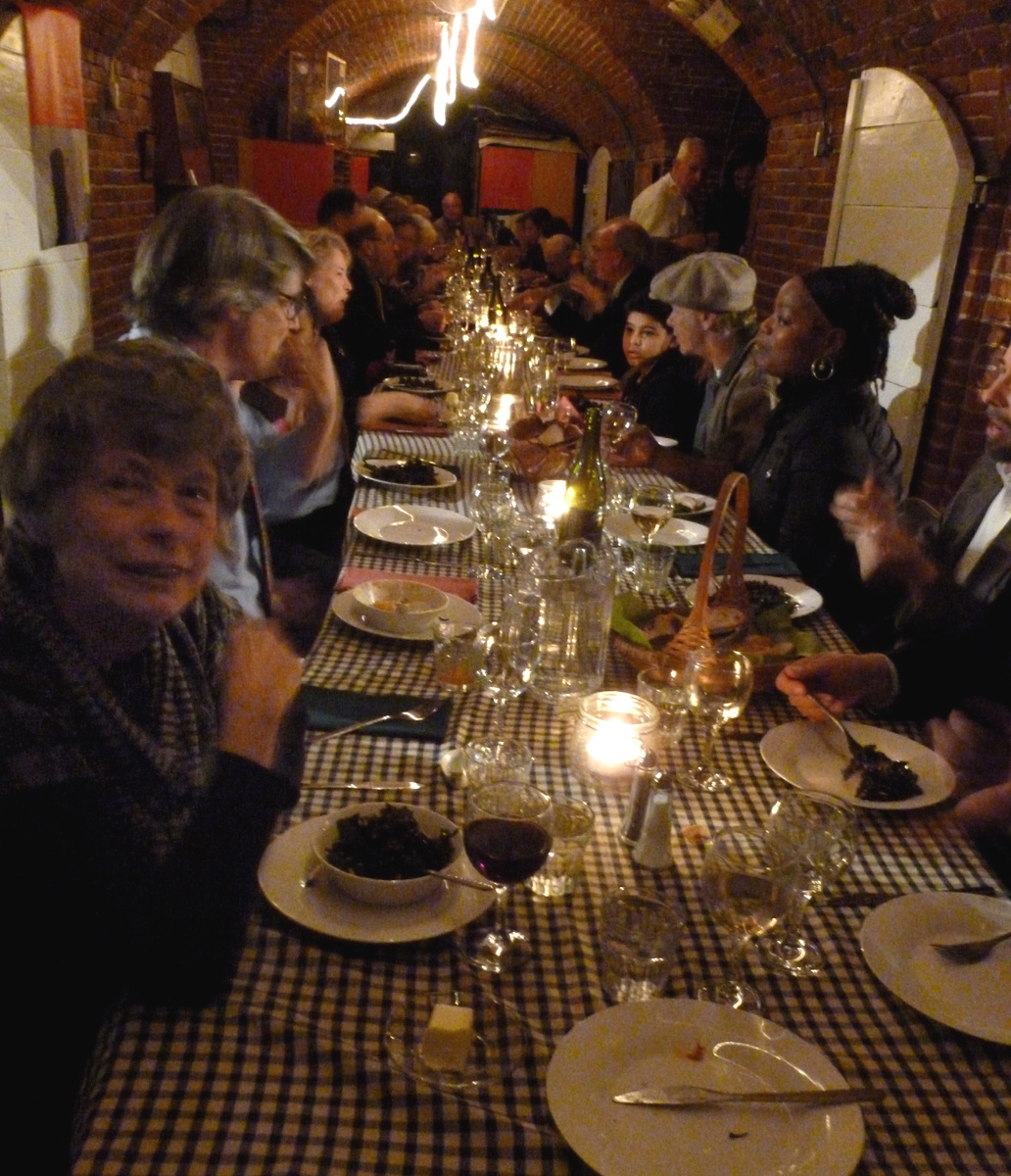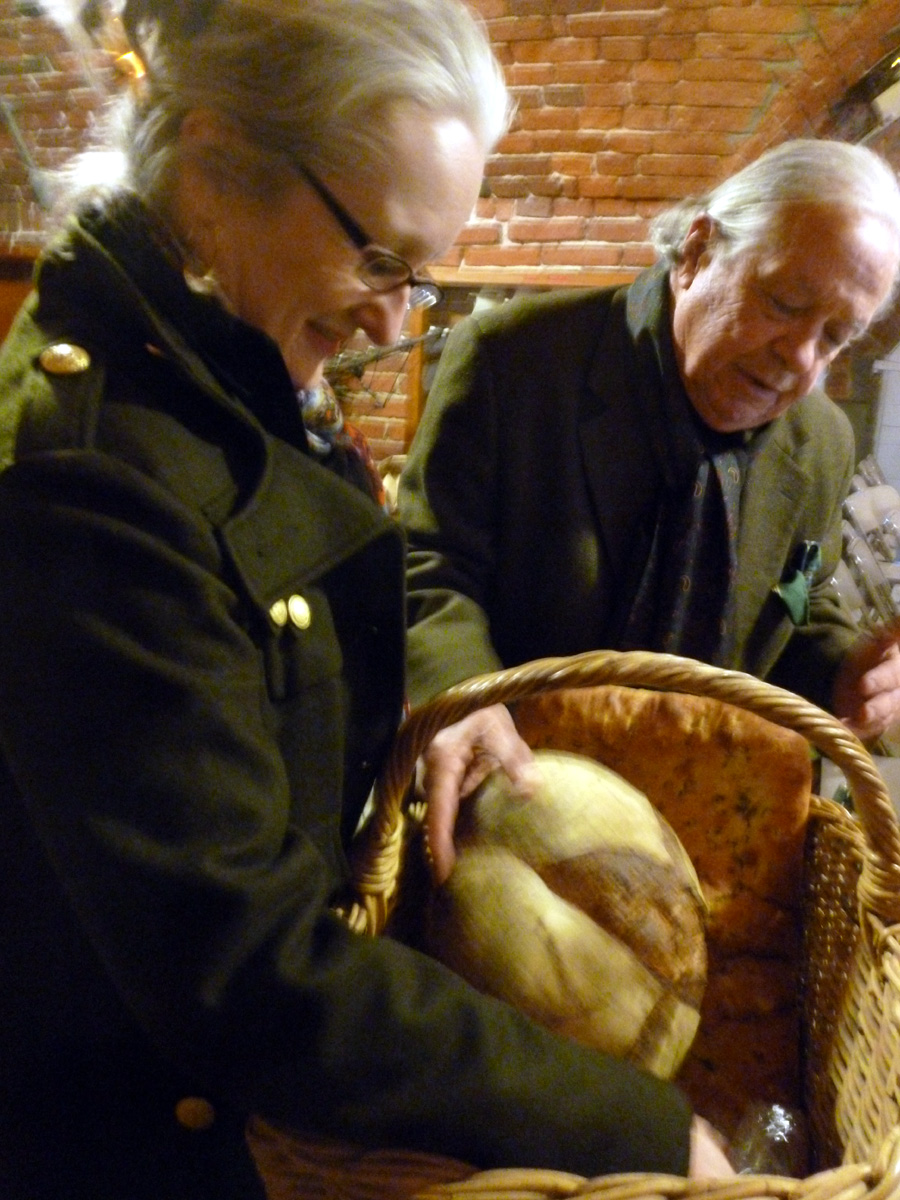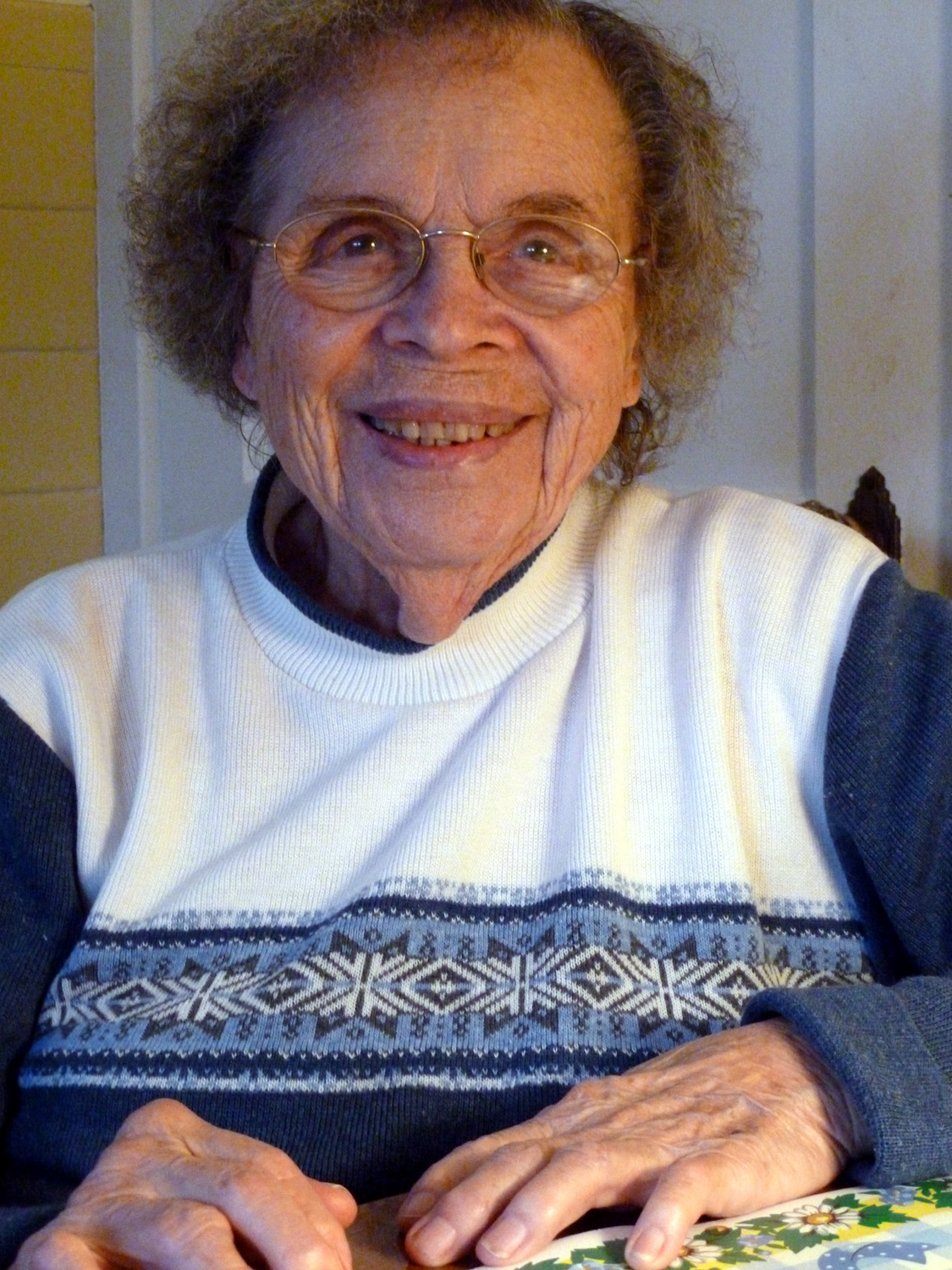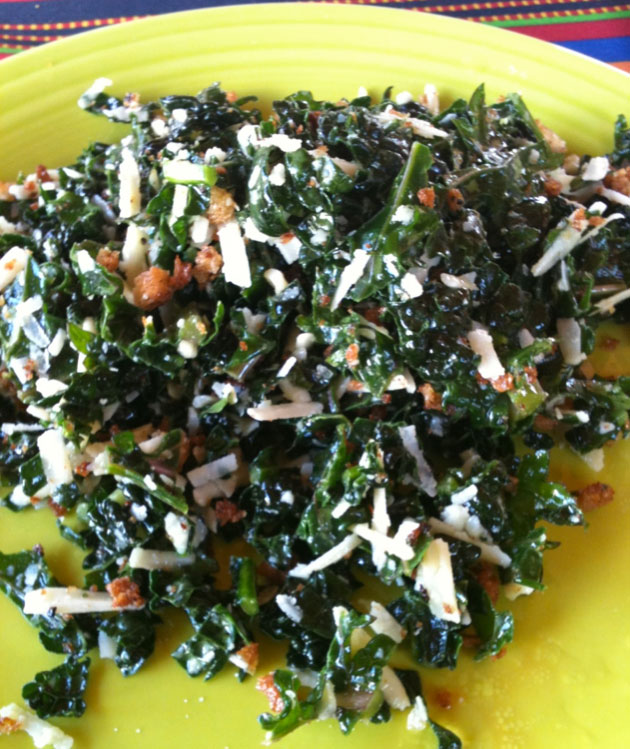Friday, November 11, 2011, was the Food Event of the Year!
One Big Table: a New London Feast - read about it in The Day
Food writer Molly O'Neill inspired this super-special event - a dinner celebrating the immigrant tradition of New London, a remarkable New England port city.
We gathered great recipes & the stories that go with them: from Ambiorix Rondon we've got a Dominican meat-yam-pumpkin stew, from Irida Santacroce-chef for decades at the Italian Dramatic Club- we've Flounder Pinwheels, Nadesha Mijoba brings Venezuelian arepas, and our main dish, prepared by Gaspar Stanick at Chaplin's, is Charlotte Hennegan's mother's creamy Irish bouillabaisse..
Week-by-week, we will present a sampling of New London's recipes, gathered for out One Big Table dinner.
1.1.12 Sunday Lunch Kale Salad, quoted from Molly O'Neill's blog:
Karen Smith-Wagner of Savoir Faire Catering prepared a raw kale salad for the Edible Institute tasting fete that resulted in major gridlock. I couldn’t get enough of it, and the next day I was helpless in front of the kale for sale at the Ojai farmers market. I bought three varieties of kale—dwarf blue curled Scotch, dwarf Siberian, and Russian Red—and, using Karen’s rough guidelines, put together this salad. We had it for a late lunch, outdoors, barefoot in front of a fireplace, with game hens that had been marinated in blood orange juice, olive oil, black pepper, and fresh rosemary. And Larry Yee’s fine beans, sausage, and collard greens. Way too good.
6 cups baby kale, thick stems and ribs removed
1/2 cup olive oil
Juice from 1 1/2 to 2 lemons
1 teaspoon sea salt
1/2 teaspoon coarsely ground black pepper, plus more to taste
1 1/2 cup coarsely grated Parmesan cheese
3 slices whole-grain bread, toasted
1. Cut the kale leaves into a fine julienne, about 1/8 to 1/4 inch wide. Rinse well and spin dry in a salad spinner. Place in a large bowl with half the olive oil and then massage the oil into the kale until every shred is nicely lubricated. Set aside. Place half the remaining oil in the bowl. Add the juice of one and half lemons, the salt, and the pepper.
2. Use a sharp knife to cut the toast into 1/8-inch cubes. Toss the cubes and the bread crumbs with the remaining olive oil and let sit for 5 minutes. Heat a cast-iron or nonstick skillet over medium high heat. When hot, add the tiny cubes and bread crumbs and toss constantly, until dark gold. Remove from heat, season lightly with additional salt, and set aside until cool.
3. Toss the kale with the lemon juice and olive oil. Taste, and adjust seasoning with additional salt, pepper, or lemon juice. Add 3/4 of the roughly grated Parmesan cheese and toss well. Add half the toasted bread crumbs and toss. Sprinkle the remaining cheese and bread crumbs on top of the salad and serve.
Makes a meal for four, after a hearty soup or with some grilled meat or fish on the side.
12.26.11 from our friend Ellie Corey, we have Armenian WARAK-A-ASHE -- or Stuffed Grape Leaves, a great hore d'oeuvre for New Year's Eve. Ellie starts by finding & picking the grape leaves in mid June or early July. Fortunately, the rest of the year, they also are available in the grocery story.
Picking grape leaves:
Look for wild white grape vines in mid-June/early July.
The greener the back of the leaf, the tenderer the leaf. White leafed backs are tough.
Good spot: Nursery Road in Norwalk.
• Soak in a dishpan then wash each one carefully
Soak in a dishpan then wash each one carefully
• Spread out to try on paper towel or dishtowel
Spread out to try on paper towel or dishtowel
• Package according to small, medium or large patches, with bigger leaves on the bottom of the pile.
Package according to small, medium or large patches, with bigger leaves on the bottom of the pile.
• Wrap tightly in tin foil, put into plastic bags, freeze; they last forever.
Wrap tightly in tin foil, put into plastic bags, freeze; they last forever.
To Roll:
Start with larger grapeleaves for bottom layer, smaller leaves for next layers.
• Shiny side down. Pinch off stem. Throw pinched stem into pot.
Shiny side down. Pinch off stem. Throw pinched stem into pot.
• Put a teaspoon of meat stuffing* onto leaf, right above the stem.
Put a teaspoon of meat stuffing* onto leaf, right above the stem.
• Roll a few rolls, turn sides in, keep a-rolling.
Roll a few rolls, turn sides in, keep a-rolling.
• Don’t roll too tight, because as we know, rice swells.
Don’t roll too tight, because as we know, rice swells.
• Layer larger rolled wadas on bottom of pot, in rows, seam side down.
Layer larger rolled wadas on bottom of pot, in rows, seam side down.
• For the next row, lay wadas in opposite direction from the row below it.
For the next row, lay wadas in opposite direction from the row below it.
Filling for 1 batch wada:
2-1/2 cups river rice
3/4 tsp. Syrian pepper*
1/4 tsp salt
then : [I'm copying this word for word]
2-1/2 lb. ground round
then…
3 cups tomatoes (canned imported plum w/sauce).
then :
6 tbsp. lemon juice
mix in big bowl, adding water from the empty tomato can
taste and add:
more syrian pepper
more salt
* Syrian Pepper:
4 oz. allspice,
1 oz. black pepper,
2 tbsp. cinnamon,
1 tsp. nutmeg,
1 tsp. cloves.
How to make stuffed grape leaves:
1. Get a leaf from a grape vine
Get a leaf from a grape vine
2. Put meat and rice and tomatoes inside
Put meat and rice and tomatoes inside
3. Roll it up kind of loose so the rice has room to cook
Roll it up kind of loose so the rice has room to cook
4. Cook it in a pot
Cook it in a pot
5. Eat it!
Eat it!
To cook:
• Cover bottom of pot with several large grapesleaves, shiny side up.
Cover bottom of pot with several large grapesleaves, shiny side up.
• Place salad-sized dish upside down on top of leaves.
Place salad-sized dish upside down on top of leaves.
• Sprinkle moderately with salt on top of plate.
Sprinkle moderately with salt on top of plate.
• Sprinkle couple dollops of lemon juice on top.
Sprinkle couple dollops of lemon juice on top.
• Add water until you can see water when you top the pan.
Add water until you can see water when you top the pan.
• Bring to a boil.
Bring to a boil.
• Let boil for few minutes.
Let boil for few minutes.
• Taste the liquid (tip the pot) for adequate seasoning – you should be able to taste a hint of lemon.
Taste the liquid (tip the pot) for adequate seasoning – you should be able to taste a hint of lemon.
• Lower to active simmer.
Lower to active simmer.
• Cook for one hour*.
Cook for one hour*.
*It totally takes two.
Dictated by Aunt Uffie on August 2, 2001
12.19.11 This week, we've got a traditional Greek cookie from Amanda Ballassi, a local Sea Scout, who currently is studying at the Massachusetts Maritime Academy. Amanda loves these cookies: 'My brother & I called them yiayia cookies, because we'd always made them with our grandmother when we visited.'
The recipe is from the Sophia's kitchen, Favorite Recipes - Enosis Philoptoches Society, St. Sophia, New London, CT. cookbook -- an updated version of an older edition, published in 1998 by the Daughters of Penelope, Dione Chapter 143, New London.
You may have tasted these cookies at the annual Greek Food Fest!
Koulourakia - from Pam Valace
1 lb unsalted butter
1 c, sugar
1 egg yoke
1 jigger brandy
1 tsp. vanilla
1/4 tsp. baking powder diluted in 1/2 jigger of warm milk
5-51/2 c. flour
Cream butter & sugar until fluffy in electric beater.
beat in egg yoke & flavorings. add dry ingredients & mix well.
knead slightly.
pinch off pieces of dough & roll into pencil-thin strips about 6 inches liong.
Fold each strip in half and twist into a rope.
place 1 inch apart on ungreased cookie sheets.
Bruish with beaten egg and sprinkle with sesame seeds.
bake at 350 degrees about 15-20 minur=tes or until lightly browned.
Yield: 5 dozen cookies
This recipe is from Mrs Margo Orphanides, my late neighbor and friend. We spent many happy hours together making these cookies.
12.12.11 Creamy Bouillabaisse, from Charlottee Henegan, Irish, of the Thames River Greenery & Beanery, on State Street. Charlotte's father was in the Navy, so Charlotte had ‘exotic’ foods all her life--recipes shared by amongst Navy wives. When her mother died, the only thing Charlotte wanted was her mom’s recipe box.
(Special thanks, too, to Jack Chaplin of Chaplin's and his chef Gaspar Stanick, who prepared and contributed this delicious dish to our One Big Table dinner.)
6 tsps (3/4 stick) butter
1/3 C thin sliced carrots
½ C minced onions
1/3 C. diced celery
3 tbls. Chopped green pepper
1 cup tomatoes w/o juice
1 bay leaf crushed
2 tbsp vinegar
2 tsps salt & ¼ tsp pepper
2 tbsp chopped parsley
¼ tsp thyme
1 cup water
6 tbls flour
1 Cup crab meat
2 5-oz lobster tails (cooked & broken up)
2 Cups cooked flaked whitefish (poached in white wine)
1 qt milk
In large pan or Dutch oven melt butter and add carrots, onions, celery & green pepper and sauté until tender.
Add tomatoes, parsley, pimento, bay leaf, vinegar, salt & pepper, , thyme, and water. Bring to boil.
Reduce het, cover and simmer 30 minutes.
Remove from heat, stir flour into veg. mix.
Add crab meat, lobster pieces, whitefish and milk.
Cover & cook over medium heat 20 to 25 minutes or until soup is heated through.
(You can substitute scallops or shrimp for lobster or crab)
Don’t boil briskly. Be very careful not to curdle the milk!
12.5.11 Recipe from Mrs. Nathaniel (Leah) Spitz. It comes from the book "From Mann to Mousse" which was prepared by Sisterhood Congregation Beth El, New London, CT. back in 1969. All recipes were home-tested by committee. From the editor's letter by Mrs. Donald Daren, "Glorious labor - it both warms and nourishes those that are engaged in it."
Brownies (Mrs. Nathaniel Spitz)
1 6 oz. package semi-sweet chocolate bits
1/3 cup shortening
2 eggs
1/2 cup sugar
1/2 cup of sifted flour
1/2 tsp. baking powder
1/4 tsp. salt
1 tsp. vanilla
1 cup chopped nuts (optional)
Melt chocolate bits with shortening over hot water. Beat eggs with the sugar until thick and add the flour, baking powder and salt. Add chocolate mixture and vanilla and blend well. Add nuts. Pour into 8 inch square pan. Bake at 375 degrees for 25 minutes.
11.28.11 AREPAS (Venezuelan corncakes) ~ from Nadesha Mijoba
I am from Venezuela and grew up eating arepas – one of the most typical foods in Venezuela. It may be because it is easy to make (in just a few minutes) and can be eaten anytime, everywhere, and with anything you want. They are the bread of our country. When coming to the United States, one of the things that I greatly missed was the arepas. We ate them with everything and anything. My mother would bake them, fry them, or grill them. In my home, you will always find Harina P.A.N., introduced by Empresas Polar in the 1960's, the most widely used masa harina in Venezuela. It may be purchased at Shop Rite or the New London Stop & Shop.
Arepas were originally made by the indigenous inhabitants of Venezuela and Colombia. These small corncakes are sold in Venezuelan restaurants called areperas and are stuffed with all kinds of fillings. They learned how to grow maize from the Quechuas (Peru) and Mayas (Mexico) where the crop was originally from. With the colonization process this corn bread made from maize was widely spread throughout the country and into Colombia. These are eaten in Colombia as well and are made a little smaller and are spread with butter or topped with cheese.
Both the Colombians and Venezuelans claim the arepa as a traditional national food. But for me, the arepas will always be part of me as a Venezuelan no matter what part of the world I am in.
Arepas Recipe: Makes 5-10 arepas
Ingredients
• Pre-cooked cornmeal -- 2 cups (The cornmeal used to make arepas is a special, precooked type that usually goes by the name masarepa, or masa precocida.)
Pre-cooked cornmeal -- 2 cups (The cornmeal used to make arepas is a special, precooked type that usually goes by the name masarepa, or masa precocida.)
• Salt -- 1/2 teaspoon
Salt -- 1/2 teaspoon
• Boiling water -- 3 cups
Boiling water -- 3 cups
• Oil -- 3 tablespoons
Oil -- 3 tablespoons
Method
1. Preheat oven to 400ºF. In a large bowl, mix together the cornmeal and salt. Pour in 2 1/2 cups of the boiling water and mix with a wooden spoon to form a mass. Cover with a towel or plastic wrap and set aside to rest for 5 to 10 minutes.
Preheat oven to 400ºF. In a large bowl, mix together the cornmeal and salt. Pour in 2 1/2 cups of the boiling water and mix with a wooden spoon to form a mass. Cover with a towel or plastic wrap and set aside to rest for 5 to 10 minutes.
2. Using wetted hands, form balls of dough out of about 1/4 cup of dough and press to form a cake about 3 inches wide and 3/4 inch thick. If the dough cracks at the edges, mix in a little more water and then form the cakes.
Using wetted hands, form balls of dough out of about 1/4 cup of dough and press to form a cake about 3 inches wide and 3/4 inch thick. If the dough cracks at the edges, mix in a little more water and then form the cakes.
3. Heat the oil in a sauté pan or skillet over medium-high heat. Sauté the patties, a few at a time, to form a light brown crust on one side, 5 to 6 minutes. Flip and brown on the other side.
Heat the oil in a sauté pan or skillet over medium-high heat. Sauté the patties, a few at a time, to form a light brown crust on one side, 5 to 6 minutes. Flip and brown on the other side.
4. When all the patties have been browned, transfer them to a baking sheet and bake in the oven for 15 to 20 minutes, or until they sound lightly hollow when tapped. Serve immediately.
When all the patties have been browned, transfer them to a baking sheet and bake in the oven for 15 to 20 minutes, or until they sound lightly hollow when tapped. Serve immediately.
Some fillings:
• Filled Arepas: Split the arepas in half and stuff with anything you want.
Filled Arepas: Split the arepas in half and stuff with anything you want.
• Arepa de Pabellón: shredded, seasoned meat and black beans.
Arepa de Pabellón: shredded, seasoned meat and black beans.
• Reina Pepeada: chopped chicken, avocado, and mayonnaise mashed together.
Reina Pepeada: chopped chicken, avocado, and mayonnaise mashed together.
• Arepa de Dominó: black beans and crumbled white cheese.
Arepa de Dominó: black beans and crumbled white cheese.
• Arepa de Perico: scrambled eggs with tomatoes, peppers and onions.
Arepa de Perico: scrambled eggs with tomatoes, peppers and onions.
11.20.11 from Ms. Phyllis Wiggins, representing New London's African-American Community
Sweet Potato Pie
3 medium sweet potatoes
2 eggs- beaten
½ stick soft utter or margarine
¼ c. brown sugar
¾ c. white sugar
½ c. milk (canner or whole)
½ tsp. nutmeg
½ tsp. cinnamon
1 tsp. vanilla flavoring
1 9-inch deep pie crust
Boil potatoes until mushy soft – mash or beat with mixer until smooth.
Add ingredients, mix and pour into unbaked pie crust – deep-dish, size 9 inch.
Bake at 350 degrees for 1 ½ hour or until firm.
Can be used as a pudding when not using the pie crust.
Molly O;Neill suggests the following pie crust:
Are you making a special crust for the sweet potato tart?
here is the recipe i thought you might be interested in. it is from one big table & you can rift on it with almost any combination of whole grains. :
2 cups all-purpose flour, plus more for rolling
1/2 cup whole-wheat flour
1 teaspoon kosher salt
1/2 teaspoon ground cinnamon
1/2 pound (2 sticks) unsalted butter, softened
1/4 cup packed dark brown sugar
1/4 cup granulated sugar
1/4 cup honey
1. Combine both flours, the salt, and cinnamon in a large bowl.
2. Cream the butter in the bowl of an electric stand mixer. Add both sugars and blend well. Mix in the honey.
3. Add half of the dry ingredients and mix until fully combined. Add the remainder and mix, scraping down the sides of the bowl as needed.
4. Divide the dough in half and transfer each piece to a sheet of plastic wrap. Pat each into a disk. (The dough will be tacky.) Wrap and refrigerate for 1 hour, until firm. If you are making only one crust, wrap one disk in foil or place it in a zipper-top plastic bag and freeze for up to 3 months.
5. Remove one disk from the refrigerator and place on the work surface. Unwrap, keeping the dough on top of the plastic wrap. Lightly dust the exposed surface of the dough with flour and put another piece of plastic wrap on top so you have a plastic wrap, dough, flour, plastic wrap sandwich. Roll out the dough as thin as you can manage, about 1/8 inch.
6. Remove the top layer of plastic wrap. Put a 9-inch pie pan upside down on the rolled-out dough and with a sharp knife, cut out a circle about 1 inch wider than the widest part of your pie pan. Move the excess dough out of the way.
7. With the pie pan still upside down on top of the dough, carefully lift the circle of dough and the pan with your hand under the bottom plastic wrap. Carefully flip this over so the whole thing is right side up, peel off the plastic, and gently slide the dough down into the pan so that it fits nicely. Trim any excess dough off the lip of your pan with a sharp knife.
8. To bake: Preheat the oven to 325ºF. Meanwhile, briefly refrigerate the pan with the dough, about 5 minutes.
9. Prick the crust all over with a fork to prevent it from bubbling and bursting in the oven). Bake about 18 minutes, until cooked through and lightly browned. Cool to room temperature on a wire rack and proceed with the recipe for filling.
Makes enough for two 9-inch single-crust pies
Charles Van Over, the scholar and brick oven baker interpreted breads from a variety of these ethnic groups, while Elisa Giommi of Mangetout Organic Cafe working with recipes collected by One Big Table, created contemporary versions of some of the finest dishes in Maritime New England. Saltwater Farm Vineyard matched their wines to the menu to create an evening that celebrates place, time and spirit.
We'd like to thank Molly O'Neill and her One Big Table crew for bringing this wonderful concept to New London. We also thank the fantastic heritage cooks of our fair city: Amanda Ballassi, Elvira Montessi Carbone, Ellie Corey, Charlotte Henegan, Nadesha Mijoba, Ambirox Rondon, Irida Santacroce, Lou Souza, Phyllis Wiggins; our dinner guests, chefs, volunteers, & sponsors: The Enders Fund for bringing Molly O'Neill to New London: Gaspar Stanick of Chaplin's, Charles Van Over, Saltwater Farm Vineyard, Amborex Rondon of Mambo's, Nadesha Mijoba of Provenance Center, Tony D's, and Elisa Giommi of Mangetout Organic Cafe for the dinner, the Connecticut Humanities Council for the Lighthouse Kids Heritage Project & Sound Insurance Services for the Lighthouse Kids Heritage Award.
Molly tonight confirmed that will build on this event in the future. In fact, we're already working on the next round of recipes for 2012!
About Molly: Born in Columbus, Ohio, long before words such as multiculturalism or immigration were part of the local vernacular, Molly O'Neill is the author of four cookbooks, including The New York Cookbook, and of a memoir, Mostly True. She was the editor of American Food Writing, an anthology published by the Library of America. A multiple James Beard award winner, O'Neill hosted the PBS series Great Food and was, for over a decade, the food columnist for The New York Times's Sunday magazine. She spent the last ten years traveling around the U.S. gathering recipes and food stories from American cooks to create the acclaimed One Big Table: A Portrait of American Cooking. Despite such demands as eating the occasional fried grasshopper, Rocky Mountain oyster, lutefisk, old drum, and Big Mac, she is continuing to locate, document, and preserve American recipes and food stories.
Thank to Molly, and to all our food providers, chefs and volunteers, for making this evening so memorable.
